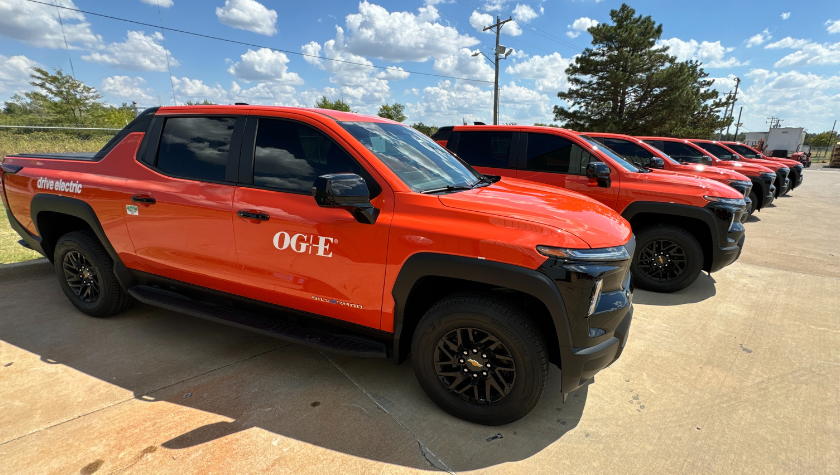EV Basics
Discover essential information about electric vehicles, including benefits, types,
and charging options to help you make informed decisions for a greener lifestyle.

Graphic by Madison Martin
Internal Combustion Engine (ICE)
Internal combustion engine vehicles are powered solely by fossil fuels (gas or diesel). The most common vehicle seen on the road.
What is an Electric Vehicle (EV)?
An electric vehicle (EV) is a vehicle that uses an electric motor and battery to run, instead of a gasoline engine.
Types of EVs
There are three main types of EVs, hybrid electric vehicles (HEVs), plug-in hybrid electric vehicles (PHEVs), and battery electric vehicles (BEVs). The infographic compares their internal components to a standard gasoline-powered internal combustion engine (ICE), illustrating their different reliance on electricity with colorful visuals.
Hybrid Electric Vehicle (HEV)
HEVs are powered by an internal combustion engine and electric motors that store energy in batteries. They cannot be plugged in, instead it uses regenerative braking, the capture of energy during braking, and the engine to recharge the battery.
Plug-In Hybrid Electric Vehicle (PHEV)
PHEVs can operate on electricity and have a small gasoline engine that recharges the battery or powers the wheels, extending driving range. They typically achieve 20-50 miles in EV mode, reducing fuel use and emissions by 14-47%. If no electricity is available, they can run solely on gasoline.
Battery Electric Vehicle (BEV)
BEVs are solely powered by electricity and require to be plugged into an electricity source.
Each year we see more EV models hit the market. It is important to note that each EV’s range, battery capacity, and features depend on the year, make, and model of the vehicle. There are all-electric sedans, hatchbacks, SUVs, pick-up trucks, and transit buses.
ELECTRIC VEHICLE FLEETS
EV fleets are collections of electric vehicles operated by government agencies, public, and private organizations for local transportation needs. Their benefits include lower operational and maintenance costs, reduced greenhouse gas emissions, and improving overall air quality. EV fleets are more prevalent in Oklahoma than one might expect.
The following Oklahoma entities are currently utilizing EV fleets:
- Tinker Air Force Base
- Oklahoma Gas & Electric (OG&E)
- Amazon Delivery
- Walmart Delivery
- City of Oklahoma City
- City of Norman
- City of Nichols Hills
- Oklahoma City Zoo
- Oklahoma Municipal Power Authority (OMPA)
- Oklahoma Electric Operative (OEC)
- EMBARK
- Public Service Company of Oklahoma (PSO)

Greenhouse Gas (GHG) Impacts
Driving an Electric Vehicle Improves Oklahoma Air Quality by Avoiding Unnecessary Toxic Tailpipe Emissions.

Oklahoma Emits 18% Less Carbon Dioxide for EV Charging Compared to the National Average Thanks to our Clean Wind Energy.
Which EV Persona Are You?

EV Terminology
Level 1 Charging
Charging your EV using a common household outlet up to 120v. Level
1 is the slowest method of charging and can take up to 24 hours or more to full charge your EV.
Combined Charging System (CCS)
Another method to quickly charge electric vehicles through a special electric connection. CCSs often use the SAE J1772, which is the North American electrical standard for Electric Vehicles.
Tesla Supercharger
A super-fast charging system that can provide up to 120 kW directly to the car’s battery. Currently these systems are only available to Teslas.
Level 2 Charging
Charges your EV at 240v using an installed outlet. Level 2 chargers are the most recommended chargers to EV owners. Depending on your EV model and charger, Level 2 can charge your vehicle 5x as quickly as Level 1 which translates up to 26 miles per hour of charging.
kWh (Kilowatt hour)
A unit of electric power.
GHG (GreenHouse Gas)
A gas such as Carbon Dioxide that contributes to global warming through the absorption of infrared radiation.
LIB (Lithium-ion battery)
Also known as a Li-ion, it is a common rechargeable battery.
Regenerative Braking
A method of braking used by EVs in which energy from the braking of the vehicle is stored and used, increasing the vehicle’s efficiency.
Off Peak Charging
Charging your EV at times when electricity rate prices are lower, typically in the overnight hours of the day.
Level 3 Charging
Also known as DC charging, the fastest method of charging for all EVs. It can fully charge an EV battery in about half an hour. Level three public charging can be more expensive than charging at home or at a workplace. While heavily relying on level three charging can accelerate battery degradation the impact on long-term battery health is minimal.
SAE J1772
The standard North American electrical connection for Electric Vehicles. Generally works with Level 1 and Level 2 systems.
Battery Management System
An electronic system within the Vehicle that manages and protects the battery.
V2G, V2H, V2B, V2V, V2X (vehicle to grid/home/building/everything)
Technologies that enable EVs to communicate and exchange energy with the grid, a home, a building, another vehicle, or other energy-consuming destinations.
